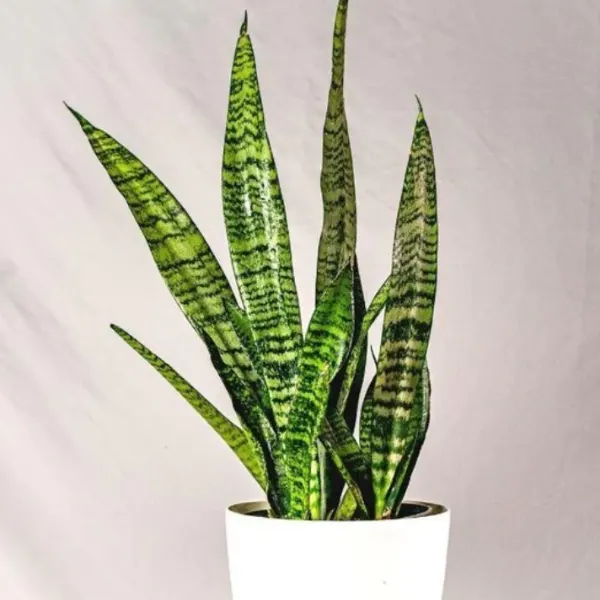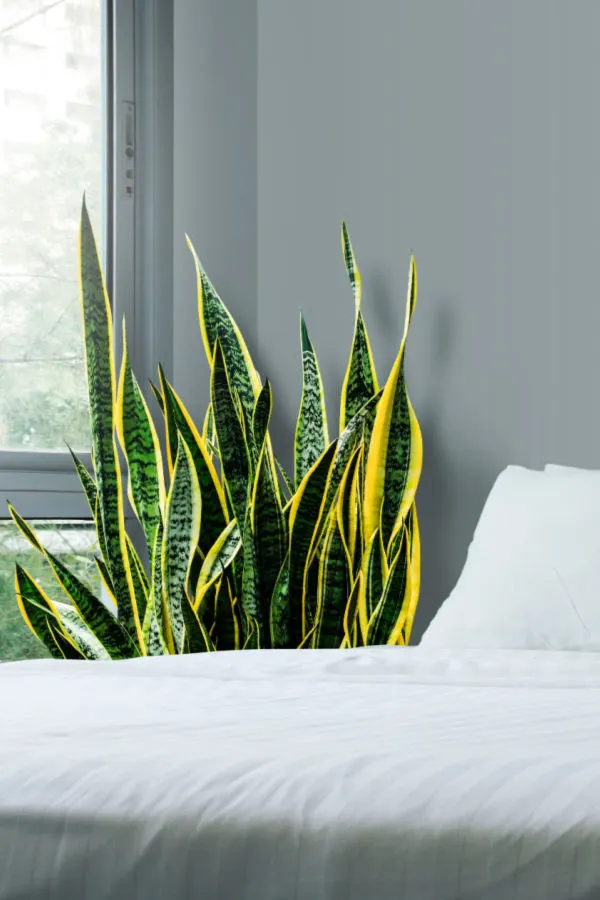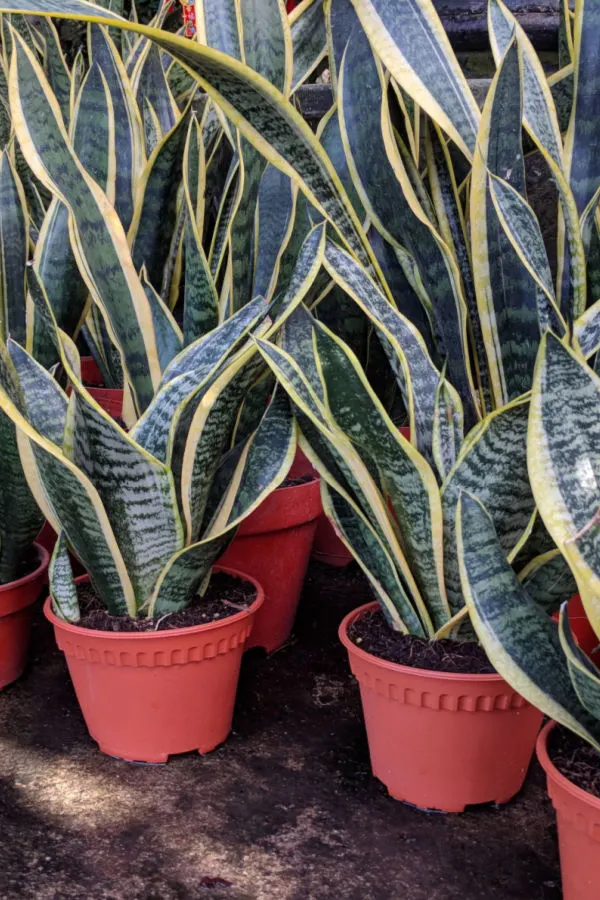When it comes to finding a low-care, easy to maintain plant for your indoors, it’s hard to beat growing snake plant. Not only does it require little care, it can also provide big color and interest inside your home!
Snake plant’s dark green thick and waxy foliage is a sight to behold. Especially when you add in its long, variegated white and yellow striping that marks its spiraling foliage. With varieties that can grow from just a few inches tall to more than six feet in height, there is a snake plant to fit nearly any space.
But the accolades of this durable plant don’t stop with just its beauty. In addition to its interior use as a houseplant, snake plant can also be grown outdoors during the warmer months. In fact, it is perfect for growing on porches, patios and all types of outdoor living spaces.

Snake plant can even be planted directly in bed spaces, and then re-potted in the fall for overwintering indoors. And when you consider how easy it is to propagate and divide, it can be an inexpensive method for creating all kinds of plantings inside and out.
But perhaps the most enticing attribute of snake plant is its toughness and durability. As you will see below, snake plant can thrive with just the slightest of care. In fact, it’s fair to say the plant is almost impossible to kill!
How To Grow Snake Plant Indoors
All you really need to grow snake plant successfully is good soil, proper lighting, warmth, and adequate but not excessive water. If you provide those simple key elements, you can grow snake plant without worry.
Snake plant is a fairly common houseplant, and can be found for purchase in most larger garden centers and on-line plant stores. There are a wide range of plants to fit any space. Varieties like Futura Superba grow smaller and are perfect for windowsills and bookcases.

Others, such as the Black Coral variety, grow long and slender and are perfect for growing in corners and tight spaces. The good news is once you own a snake plant, they are easy to divide to create additional plants for free.
How To Care For Snake Plant
Warmth & Lighting – Growing Snake Plant Indoors
One of the best attributes of the snake plant is that it can handle nearly any lighting condition. From low light to partial sun, snake plant adapts well to whatever light it receives. Best practice calls for selecting a location that is away from full sun exposure, but still receives large amounts of daily indirect lighting.
If moving outdoors during the summer months, covered porches and patios are excellent choices for this type of lighting. Again, it’s important to note that the plant will still survive and grow with less or more light, but indirect lighting is by far the best.
Because of its tropical nature, snake plant grows best in temperatures between 70 and 90 degrees. Select the warmer rooms of your home for best results. When locating your plant, always keep it away from drafts or excessive heat sources.
Watering – Growing Snake Plant Indoors
Overwatering is more of an issue when growing snake plant than underwatering. The roots of snake plants are susceptible to rotting when they remain in water too long. Because of this, keeping it on the dryer side is far better for the plant.

Just because the top layer of soil looks dry, there could still be moisture down at the root level. If water pools for more than a few hours in the saucer or tray below the plant after watering, drain it away to prevent saturating the roots.
Allow the soil to dry out between each watering. Check deep in the soil for moisture with a long wooden skewer or stick to be sure soil is completely dry before watering. You can also use a plant moisture probe to check the moisture near the root level.
Dividing Overgrown Plants – Growing Snake Plant Indoors
Snake plant will occasionally need to be replanted when it begins to outgrow its container. Under normal interior growing conditions, snake plant will usually need replanting every 4 to 5 years. This can vary depending on how much light the plant receives.
Select a pot about 25% larger than the root ball to allow enough room for roots to expand. This is also a great time for dividing plants to create new starts.
Propagating New Plants – How To Grow Snake Plant Indoors
Although you can root new cuttings in water to create new snake plants, the process can be quite long. For that reason, most prefer to create additional plants by simply dividing the roots of existing plants.

To divide snake plants, use a sharp knife to slice down through the root ball. Try to slice in between the foliage and soil line to create equal sizes of new plants. Depending on the size of your existing plant, you can create anywhere from 2 to 4 new plants quite easily.
Re-pot the root sections in high quality, well-draining potting soil (see below for more info on soil) and keep in a warm, well-lit room with good indirect lighting. And just like that – you have multiple snake plants!
Soil – Growing Snake Plant Indoors
Snake plant grows best in loose, well draining soil. Avoid potting soil mixes with too much compost or peat moss as they tend to trap moisture into the soil. Instead, select a high quality, loose soil mix that is more on the sandier side. This allows roots to dry out between each watering, and prevents them from sitting in wet soil for long periods.

Potting mixes that are for growing cacti or succulents are among the best to use for snake plant. They drain fast and do not retain excessive amounts of water in the soil. For more great info on houseplants, be sure to check out our House Plants Page on the blog.
Follow Our Facebook Page For Great Gardening Tips And Advice! This Is My Garden Facebook Page
This Is My Garden is a garden website created by gardeners, for gardeners. Jim and Mary Competti have been writing gardening, DIY and recipe articles and books and speaking for over 15 years from their 46 acre Ohio farm. They publish three articles every week, 52 weeks a year. Sign up today to follow via email, or follow along!
